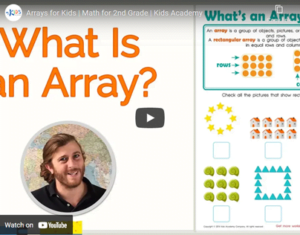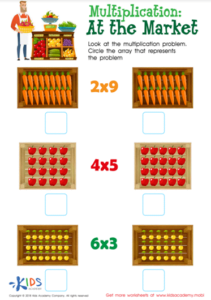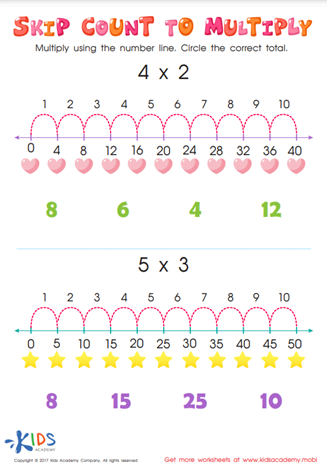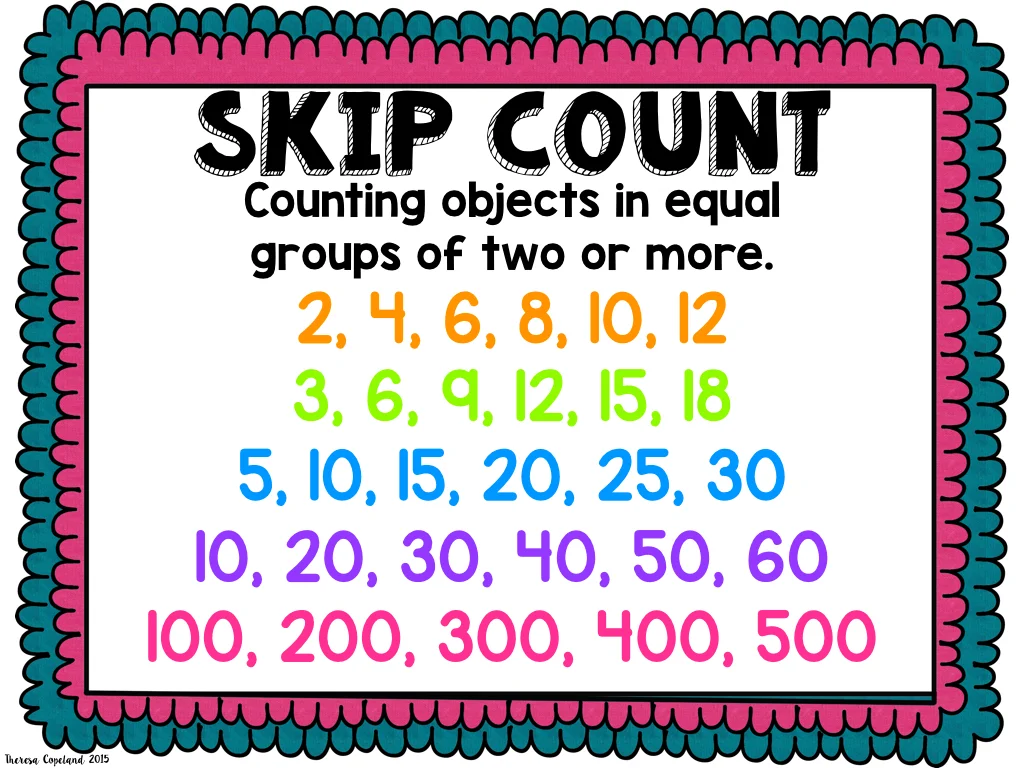Skip counting and arrays might be worthwhile to review the basics of multiplication facts if your child has difficulty mastering complex math problems such as division and two-digit multiplication. Multiplication doesn’t need to be boring drills or flash cards. What’s more important, is your child has a solid understanding of multiplication. This article will help you understand how visuals like arrays and skip counting along a number line can help your child see how multiplication works.
Multiplication is often confused with addition. Children will also memorize multiplication facts, but not understand multiplication. What does it actually mean to multiply? Multiply means adding equal groups. The problem 2 “times” 4 indicates that we are adding a group of 2 four times. Multiplication’s commutative property means that the answer to multiplication is the same regardless of the order in which the numbers are multiplied. We might consider “2×4” as adding a group of 2, four times OR we might think of it as adding a group of four, two times.
An array is one of the best ways to help your child visualize this. An array is a uniformly distributed arrangement of objects such as numbers in rows and columns. It’s similar to a grid. Rectangular arrays can be used to help children visualize multiplication and make it more concrete. This video will explain what an array is.

The video is taken from Kids Academy Youtube channel.
To demonstrate multiplication, help your child draw a rectangle array with fun objects such as stars, squares, and stickers. To show 2×3, draw three rows of apples, with 2 apples in each row. Next, count the objects from one to six. Then, help your child determine that the two columns times the three rows equals six. Explain that multiplication is simply an easier way to add numbers.
Next, sort the objects into equal groups. Encourage your child’s mastery of multiplication with arrays. Ask them to draw an array from a multiplication fact that you have given them. Or ask them to identify the array that is drawn from a multiplication problem such as in the activity Multiplication: At the Market.

The image is taken from www.kidsacademy.mobi
Another way to visualize multiplying is skip counting by drawing a number line. Start by drawing a simple number line, which is numbered between zero and ten. Explain that multiplication problems like 2×3 are actually asking you to calculate what you will get if you create three groups of 2. You can see that creating two groups of three shows you why six is the product 2×3.
The activity below will encourage your child to practice multiplying with number lines. The number lines in this activity show skip counting by 5s and 4s. Your child should be able to skip count the amount of times it is necessary to land on the correct answer.

The image is taken from www.kidsacademy.mobi
If you want to learn more on this topic, read Skip Counting to Teach Multiplication article.
For More interesting News:
- Can Count On The Experience Of Attorney Brandon J. Broderick
- The Kings Of Adventure Snow Sports In The Beautiful Mountain
- Socolive.Live A Best Sports Broadcasting Platform
- How to Get Your Castle Water Bill Paid
- Andersen Lab
- LEXCO Australia
- Saruei Real Face | Reaction of Saruei Fans
- Doug wright Holland & knight| A Former Partner at Holland & Knight, is an Executive Partner at Venable LLP
- Terry lee Flenory| Who is Terry Lee Flenory: Life & Career
- Gabbie Jonas| Gabbie Jonas Cause of Death
- What is WhatLeaks? Find Out Your IP and DNS







